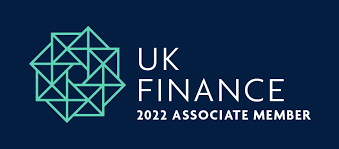What is a collateral (or collateralized) loan?
A collateralized loan, also known as a secured loan, is a type of borrowing where the borrower pledges an asset as security for the loan. This arrangement provides the lender with assurance that the loan will be repaid, as the asset can be seized and sold if the borrower defaults. For a UK audience, understanding the nuances of collateralized loans is essential for making informed financial decisions.
Key Aspects of a Collateralized Loan:
- Definition:
- A collateralized loan is a loan that is secured by an asset owned by the borrower. The asset, known as collateral, acts as a form of security for the lender. If the borrower fails to repay the loan, the lender has the right to take possession of the collateral to recover the outstanding debt.
- Common Types of Collateralized Loans:
- Mortgages: Loans secured by real estate property, such as a house or commercial building.
- Auto Loans: Loans secured by a vehicle.
- Business Loans: Loans secured by business assets, such as equipment, inventory, or accounts receivable.
- Home Equity Loans: Loans secured by the equity in the borrower’s home.
- Secured Personal Loans: Loans secured by various personal assets, including savings accounts, investments, or valuable personal property.
- Benefits:
- Lower Interest Rates: Because the loan is secured by an asset, lenders typically offer lower interest rates compared to unsecured loans.
- Higher Borrowing Limits: Borrowers can often obtain larger loan amounts because the lender’s risk is mitigated by the collateral.
- Improved Creditworthiness: Secured loans can be easier to obtain for borrowers with lower credit scores because the collateral reduces the lender’s risk.
- Risks:
- Asset Seizure: If the borrower defaults on the loan, the lender can seize and sell the collateral to recover the debt.
- Fluctuating Asset Values: The value of the collateral can change over time, potentially affecting the security of the loan.
- Commitment of Assets: The pledged assets are tied up and cannot be sold or used for other purposes until the loan is repaid.
- Process of Obtaining a Collateralized Loan:
- Application: The borrower applies for the loan, providing details about the asset to be used as collateral.
- Valuation: The lender assesses the value of the collateral to determine the loan amount and terms. This may involve an appraisal for assets like real estate.
- Approval: The lender reviews the borrower’s creditworthiness, the value of the collateral, and other financial information before approving the loan.
- Loan Agreement: The terms of the loan, including the interest rate, repayment schedule, and conditions for asset seizure, are outlined in the loan agreement.
- Disbursement: Once the loan is approved, the funds are disbursed to the borrower. The collateral is held as security until the loan is fully repaid.
- Example:A UK-based small business needs a £50,000 loan to purchase new machinery. The business owner decides to use their commercial property, valued at £100,000, as collateral.
- Valuation: The lender assesses the property and agrees to an LTV ratio of 50%, approving the £50,000 loan.
- Agreement: The loan agreement specifies that the commercial property is used as collateral. The terms include the interest rate, repayment schedule, and conditions under which the lender can seize the property if the business defaults.
- Repayment: The business makes regular loan payments. If the business defaults, the lender has the right to seize and sell the commercial property to recover the loan balance.
Conclusion:
A collateralized loan is a useful financial tool for UK borrowers, offering lower interest rates and higher borrowing limits by securing the loan with an asset. However, it comes with the risk of losing the pledged asset if the borrower defaults. Understanding the terms, benefits, and risks of collateralized loans helps borrowers make informed decisions and manage their financial obligations effectively. Careful consideration and planning are essential to ensure that the benefits outweigh the potential risks.

